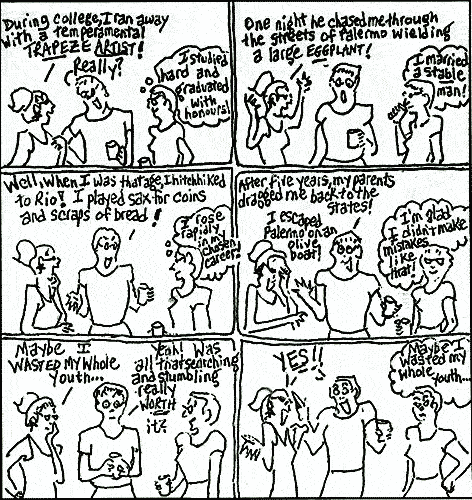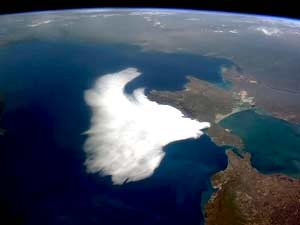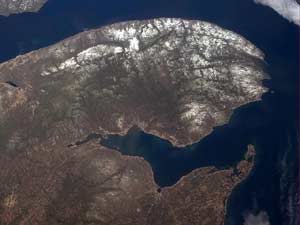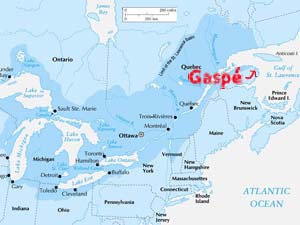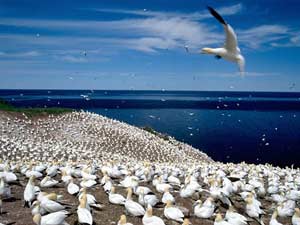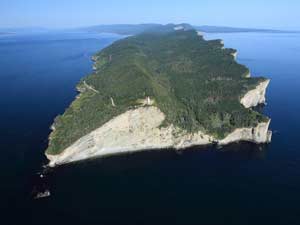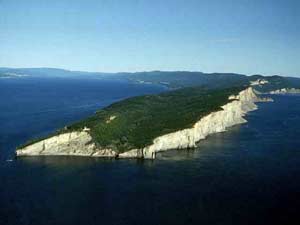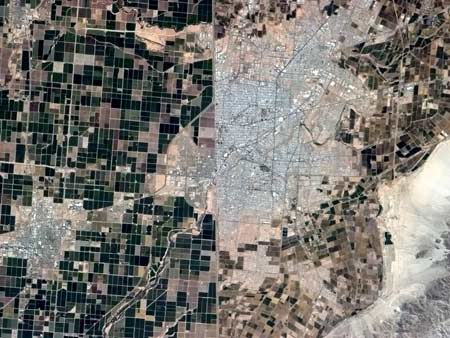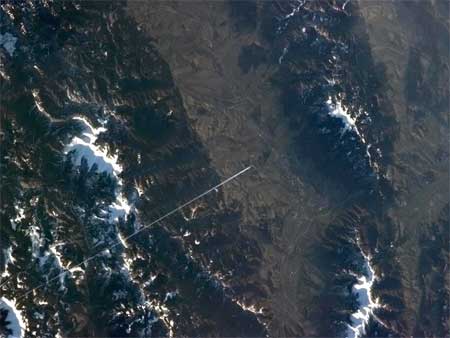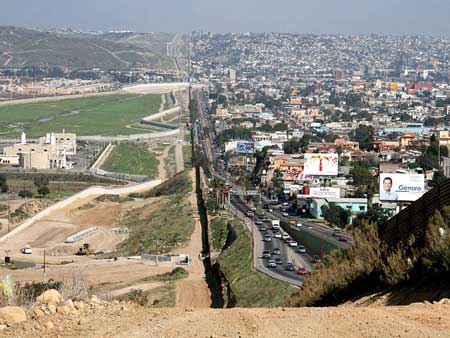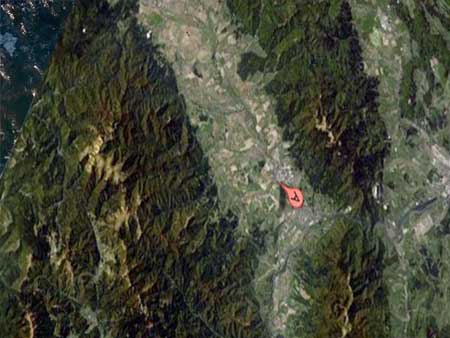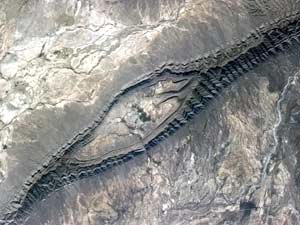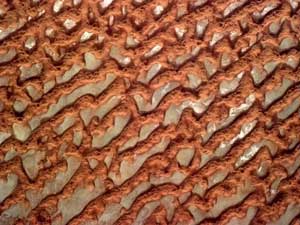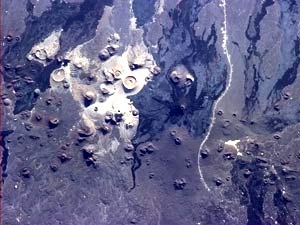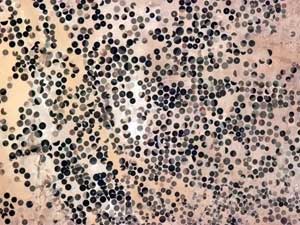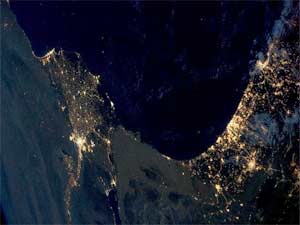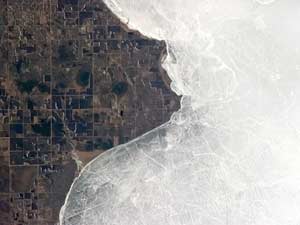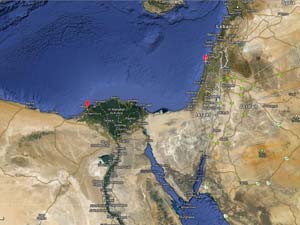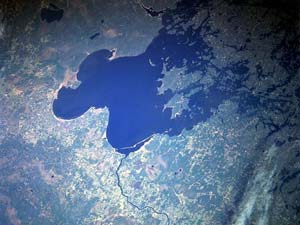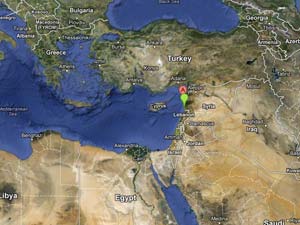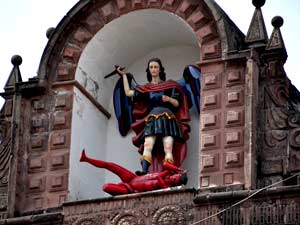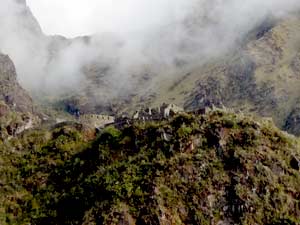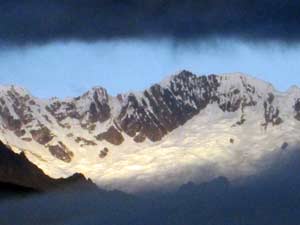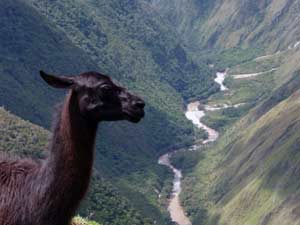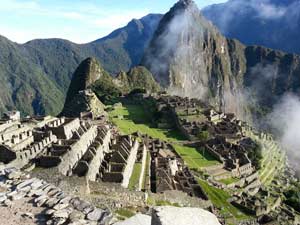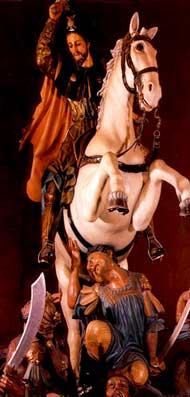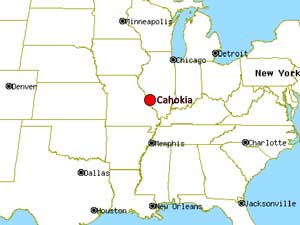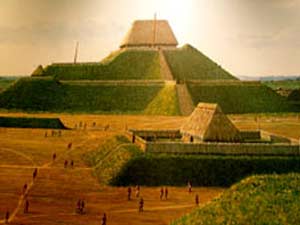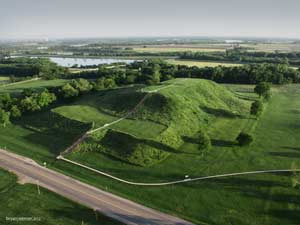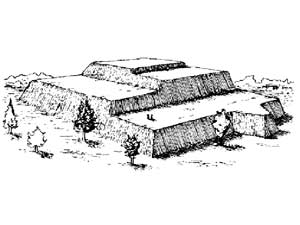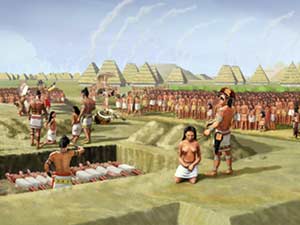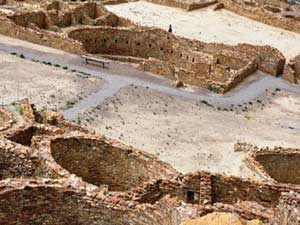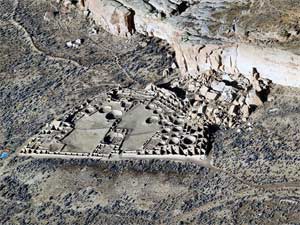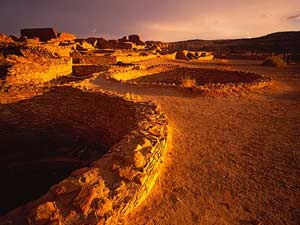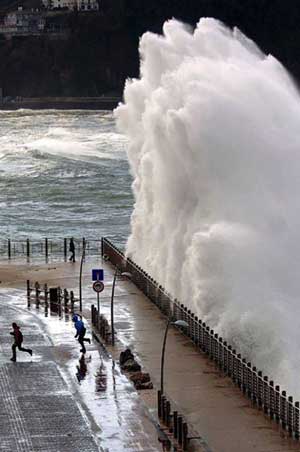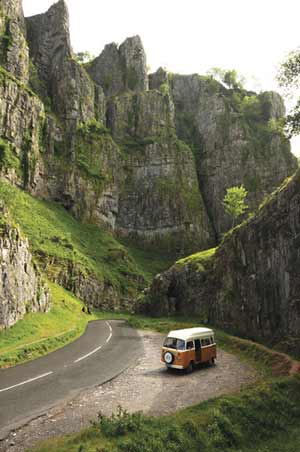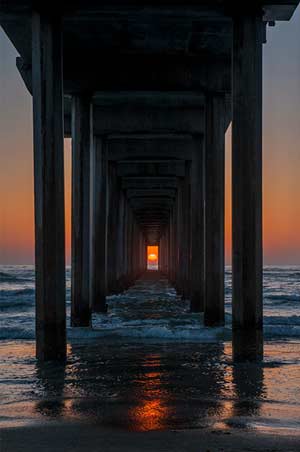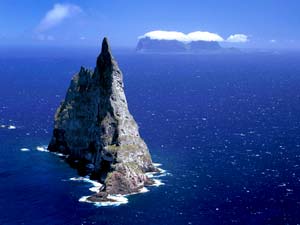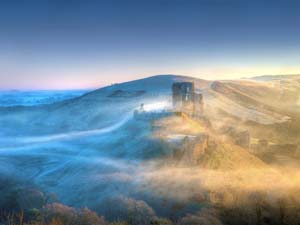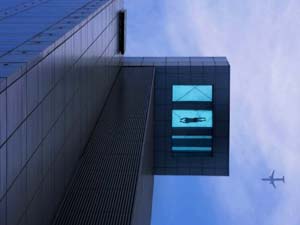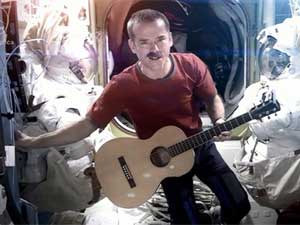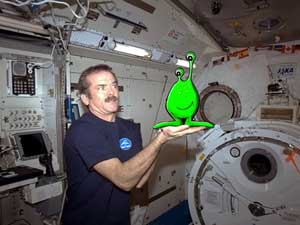Security is mostly a superstition. It does not exist in nature, nor do the children of men as a whole experience it.
Avoiding danger is no safer in the long run than outright exposure.
Life is either a daring adventure — or nothing.
Vulnerant Omnes
May 30, 2013
Vulnerant omnes, ultima necat. “Every hour wounds; the last one kills.”
To me, this means that time is precious, don’t waste it. It reminds me of another Latin phrase, Memento mori, which means “Remember that you’ll die.” Popular belief says the phrase originated in ancient Rome where a Roman general paraded through the streets during a victory triumph. Standing behind him was his slave, tasked with reminding the general that, although at his peak today, tomorrow he could be brought down. The servant is thought to have conveyed this with the warning, “Memento mori”. He may well also have advised: “Respice post te!” which means “Look behind you!” (as noted by Tertullian in Apologeticus). I’ll take that to mean, “Be careful!” (But not too careful…)
| Oh plunge your hands in water | O stand, stand at the window | |
| Plunge them in up to the wrist | As the tears scald and start; | |
| Stare, stare in the basin | You shall love your crooked neighbour | |
| And wonder what you missed. | With your crooked heart. | |
| The glacier knocks in the cupboard, | It was late, late in the evening, | |
| The desert sighs in the bed | The lovers they were gone; | |
| And the crack in the tea cup opens | The clocks had ceased their chiming | |
| A lane to the land of the dead. | And the deep river ran on. | |
| — excerpt from “Song” by W H Auden | ||
Brought Up, Brought Down
| To me, a good example of someone who lives life to the fullest is Commander Chris Hadfield, Canadian astronaut just back from 5 months in the International Space Station. Hadfield, perhaps more than any previous astronaut, shared the space experience with those people who pay for it via their tax dollars and who benefit from it in form of new technologies and inspiration. (He’s heavy on the inspiration.) Of the photographs below that are identified as being taken by Hadfield, this site (called “Our World from the ISS”) supplies the Google Maps coordinates if you know the general location of the shot. Not all the photos have north at the top, so they may need to be rotated to match them up. |
||
The Black Sea
Crimea is a peninsula of Ukraine located on the northern coast of the Black Sea. The Autonomous Republic of Crimea occupies most of that peninsula. The territory of Crimea has been conquered and controlled many times throughout history. The Cimmerians, Greeks, Scythians, Goths, Huns, Bulgars, Khazars, the state of Kievan Rus’, Byzantine Greeks, Kipchaks, Ottoman Turks, Golden Horde Tatars and the Mongols all have controlled Crimea at one time or other. In the 13th century, it was partly controlled by the Venetians and the Genovese; they were followed by the Crimean Khanate and the Ottoman Empire in the 15th to 18th centuries, the Russian Empire in the 18th to 20th centuries, Germany during World War II and the Russian Soviet Federative Socialist Republic and later the Ukrainian Soviet Socialist Republic, within the Soviet Union during the rest of the 20th century. But Crimea is now an autonomous parliamentary republic, within Ukraine. Yalta is a resort city on the northern shores of the Black Sea whose existence was first recorded in the 12th cantury. Leo Tolstoy, Anton Chekhov, Tsar Alexander III, Nicholas II, and Joseph Stalin have all lived there. In 1920, Vladimir Lenin issued a decree “On the Use of Crimea for the Medical Treatment of the Working People” which endorsed the region’s transformation from a fairly exclusive resort area into a recreation facility for tired proletarians.
The Black Sea is in southeastern Europe, bounded by Europe, Anatolia and the Caucasus, and ultimately connected to the Atlantic Ocean via the Mediterranean and the Aegean seas and various straits. The Bosphorus Strait connects it to the Sea of Marmara, and the Strait of the Dardanelles connects that to the Aegean Sea region of the Mediterranean. These waters separate eastern Europe and western Asia. The Black Sea is also connected to the Sea of Azov by the Strait of Kerch. It’s the world’s largest basin where deep waters don’t mix with the upper layers that receive oxygen from the atmosphere. As a result, over 90% of the deeper Black Sea volume is anoxic. The upper layers are generally cooler, less dense, and less salty as they’re fed by large fluvial systems, whereas the deep waters originate from the warm, salty waters of the Mediterranean. The influx of dense water from the Mediterranean is balanced by an outflow of fresher Black Sea surface-water into the Marmara Sea. Certain species of extremophile bacteria use sulfate in the oxidation of organic material, which leads to the creation of hydrogen sulfide (H2S). Organic matter, including anthropogenic artifacts such as boat hulls, are well preserved — ancient shipwrecks in excellent states of preservation have been discovered. However, modelling shows the release of H2S clouds (in the event of, say, an asteroid impact into the Black Sea) which would be sufficient to pose a threat to health — or even life — for those living along the coast. A single country, Turkey, has complete control over the straits connecting the Black Sea with the Mediterranean. Turkey can close that strait at its discretion. Not all countries bordering the Black Sea are overjoyed.
The Kerch Strait connects the Black Sea and the Sea of Azov, separating the Kerch Peninsula in the west from the Taman Peninsula in the east. During the Second World War, the Kerch Peninsula was the scene of much desperate combat between forces of the Soviet Red Army and Germany. Fighting frequency intensified in the coldest months of year when the strait froze over, allowing movement of troops over ice. Since 1944, various bridge projects to span the strait have been proposed or attempted, always hampered by difficult geologic and geographic configurations in the area.
The Gaspé Peninsula
The most common assumption is that “Gaspé” may come from the Mi’kmaq (MicMac) word Gespeg which means “Land’s end”. However, other theories hold that the name may be a mutation of the Basque word geizpe or kerizpe which means “shelter” or “place of refuge”. Another theory is that it’s named after Portuguese explorer Gaspar Corte-Real, who explored Labrador in 1500.
The St Lawrence River begins at the outflow of Lake Ontario in Kingston, Ontario, passing Montreal and Quebec City before draining into the Gulf of St Lawrence, the world’s largest estuary. The major islands include the Thousand Islands near Kingston, the Île de Montreal, Île Jésus (Laval), Île d’Orléans near Quebec City, and Anticosti Island north of the Gaspé Peninsula. Lake Champlain and the Ottawa, Richelieu, and Saguenay rivers drain into the St Lawrence. The river widens to approximately 61 miles (100 kilometres) beyond Quebec City. Ancient inhabitants occupied the river area for at least 5,000 years and Algonquin and Iroquois tribes inhabited the river basin and adjacent uplands prior to European contact. In 1534, Jacques Cartier first sighted the river and claimed the region for Francis I (because no one else owned it, right?)
Gaspé Peninsula is Quebec’s wind-and-sea-sculpted continuation of the Appalachian range. It contains 6 wildlife sanctuaries, 25 of Quebec’s highest peaks, and 4 national parks. Remote Bonaventure Island and Percé Rock National Park are the summer nesting home of 250,000 birds.
Located at the outer tip of the Gaspé Peninsula, the sheer cliffs of Forillon National Park overlook the sea. The park includes forests, sea coast, salt marshes, sand dunes, cliffs, the eastern end of the Appalachians, nesting colonies of sea birds, whales and seals in or near the water, and black bears, moose, and other woodland animals on land. The word forillon is thought to have referred to a flowerpot island or sea stack which was once a landmark in the area but has since collapsed into the ocean. (Are different sides of this peninsula called by different names? Cap Gaspé? Cap Bon Ami?)
Same Land, Different Politics
The top photo was taken from the Space Station. The lower photo is the same scene, but from the ground. A small fence separates densely populated Tijuana, México, right, from the United States (in the Border Patrol’s San Diego Sector). Construction is underway to extend a secondary fence over the top of this hill and eventually to the Pacific Ocean. The city is the most visited border city on the globe. sharing an approximate 24-kilometre-long border (15 mile) with its sister city San Diego — over 50 million people annually cross the border between these two cities, making the San Ysidro Port of Entry the busiest land-border crossing in the world. It’s estimated that the two border crossing stations between the cities proper of San Diego and Tijuana account for 300,000 daily crossings alone.
A jet below the International Space Station has passed the Kremnicka Mountains, heading to Mount Velka Luka of the Lesser Fatra. The greater Fatra is in the bottom right corner, 12 May 2013. The photo below it is from Google Maps, rotated (the top of the “A” points north) to match. (The photograph above is much better, no?) The Slavs arrived in the territory of present-day Slovakia in the 5th and 6th centuries. In the course of history, various parts of today’s Slovakia belonged to Samo’s Empire (the first known political unit of Slavs), Principality of Nitra (as independent polity, as part of Great Moravia, and as part of the Hungarian Kingdom), Great Moravia, Kingdom of Hungary, the Austro-Hungarian Empire or Habsburg Empire, and Czechoslovakia. A separate Slovak state briefly existed during World War II, during which Slovakia was a dependency of Nazi Germany between 1939 and 1944. From 1945, Slovakia once again became a part of Czechoslovakia. The present-day Slovakia became independent on 1 January 1993.
Stripes, Herringbone, Checks, Tweed, Spots, Dots
These sand dunes seen from space in the glint of the sun almost appear to be black and white. The road is Hunters Road in Botswana near the Zimbabwe border, north of the Sua Pan, taken 28 April 2013. This whole area appears to be surrounded by national parks. Botswana is flat, and up to 70% is covered by the Kalahari Desert. It’s one of the most sparsely populated countries in the world. The dune-like sandy hills have vegetation cover (mostly bushes). Just north of here is the world’s largest concentration of African elephants.
In northeastern Mexico west of the tiny town of San Alberto in the state of Coahuila, this unusual feature seems to be about halfway between Múzquiz Municipality (named for Melchor Múzquiz, President of the Republic in 1832) to the north and San Buenaventura to the south. (“San Buenaventura” is also the official name of the city in Southern California, United States, normally referred to as Ventura, California.) Coahuila (Place of the Trees) is one of the 31 states which, along with the Federal District, compose the 32 Federal Entities of Mexico.
The Kırşehir, Turkey basin took the name Cappadocia (Land of Beautiful Horses) at the time of the Romans and Byzantines. Seyfe Lake (visible in the upper right photo) is located 35 kilometres east of Kırşehir. Earth’s water resources are endangered by inconsiderate use, pollution and lack of conservation measures. Monitoring over time is necessary for conservation and usage planning of water resources and to make informed decisions. Seyfe Lake and its environs in Turkey is one of the most important water basins in the world, because it’s a critical node on bird migration paths between Europe, Asia and Africa. The International Council of Bird Preservation has registered 27 of the bird species living at Seyfe Lake on its conservation list. Changes in the water surface area of Seyfe Lake were examined over a 26-year period using satellite images taken between 1975 and 2001. A decrease of slightly more than 33% was observed in water surface area during this period. The number of flamingo birds has reduced considerably. Since more than 600 different bird species visit this area yearly, it’s to be made into a National Park. Birds have been shot by hunters for generations, so this should help reduce that.
The following 3 photos are all of places located in Saudi Arabia.
The Rub’ al Khali (“the empty quarter”) is the largest sand desert in the world, encompassing most of the southern third of the Arabian Peninsula including most of Saudi Arabia and areas of Oman, the United Arab Emirates, and Yemen. The desert covers some 650,000 square kilometres (250,000 square miles). The terrain is covered with sand dunes with heights up to 250 metres (820 feet), interspersed with gravel and gypsum plains. The sand is a reddish-orange colour due to the presence of feldspar. The region is classified as “hyper-arid”, with typical annual rainfall of less than 30 millimetres (1.2 inches). Daily maximum temperatures average 47°C (117°F) and can reach as high as 56°C (133°F). Fauna includes arachnids (scorpions and spiders) and rodents; plants live throughout the Empty Quarter. Geologically, it’s the most oil-rich site in the world. In 1999 Jamie Clarke became the first Westerner to cross the Empty Quarter in 50 years. His team of 6 (including three Bedouin) spent 40 days crossing with a caravan of 13 camels. There are brackish salt flats in some areas.
Harrat Khaybar is a volcanic field located north of Medina and east of Khaybar on the border between Al Madinah and Ha’il provinces. It lies in the western half of the Arabian peninsula and contains not only large expanses of sand and gravel, but also extensive lava fields known as haraat (harrat for a named field). According to scientists, the volcanic field was formed by eruptions along a long north-south linear vent system over the past 5 million years; the most recent recorded eruption took place between 600-700AD. The presence of tuff cones — formed by eruption of lava in the presence of water together with other volcanic features indicative of water — suggest that the local climate was much wetter during some periods of volcanic activity. Today, however, the regional climate is hyperarid — little to no yearly precipitation — leading to an almost total lack of vegetation. I don’t know what the curvy white line to the right of centre is — it doesn’t show up on Google Earth. A seasonal creek perhaps?
These are irrigated fields roughly between Riyadh and Najran. Center pivot irrigation in Saudi Arabia is typical of many isolated irrigation projects scattered throughout the arid and hyper-arid regions of the earth. Nonrenewable fossil water is mined from depths as great as 1 kilometre (3,000 feet), pumped to the surface, and distributed via large centre pivot irrigation feeds. The circles of green vegetation may comprise a variety of agricultural commodities from alfalfa to wheat. Diameters of the normally circular fields range from a few hundred metres to as much as 3 kilometres (1.9 miles). The projects often trace out a narrow, sinuous, and seemingly random path. Actually, engineers generally seek ancient river channels now buried by the sand seas. The fossil waters mined in these projects accumulated during periods of wetter climate in the Pleistocene glacial epochs, between 10,000 to 2 million years ago, and are not being replenished under current climatic conditions. The projects, therefore, will have limited production as the reservoirs are drained. Water, of course, is the key to agriculture in Saudi Arabia — the Kingdom has implemented a multifaceted programme to provide the vast supplies of water necessary to achieve spectacular growth in the agricultural sector. A network of dams has been built to trap and utilise precious seasonal floods. Vast underground water reservoirs have been tapped through deep wells. Desalination plants have been built to produce fresh water from the sea for urban and industrial use, thereby freeing other sources for agriculture. Facilities have also been put into place to treat urban and industrial run-off for agricultural irrigation. These efforts collectively have helped transform vast tracts of the desert into fertile farmland. Land under cultivation has grown from under 400,000 acres (1,600 square kilometres) in 1976 to more than 8 million acres (32,000 square kilometres) in 1993.
Light and Dark
Alexandria is the largest city lying directly on the Mediterranean coast. The month of August received its name to commemorate the victory of Octavian (later emporor Augustus) in capturing Alexandria for Rome in 30BC. Haifa is a mixed city: 90% are Jews, more than a quarter of whom are immigrants from the former Soviet Union, while 10% are Arabs, predominantly of the Christian religion. Built on the slopes of Mount Carmel, the history of settlement at the site spans more than 3,000 years. Over the centuries, the city has changed hands: it has been conquered and ruled by the Phoenicians, Persians, Hasmoneans, Romans, Byzantines, Arabs, Crusaders, Ottomans, British, and the Israelis.
Lake of the Woods (French: Lac des Bois) is a lake occupying parts of the Canadian provinces of Ontario and Manitoba and the US state of Minnesota. The lake separates a small land area of Minnesota from the rest of the US: the Northwest Angle and the town of Angle Township can only be reached from the rest of Minnesota by crossing the lake or by travelling through Canada. The Northwest Angle is the northernmost part of the contiguous United States. The lake drains into the Winnipeg River, thence into Lake Winnipeg, and ultimately to Hudson Bay. The lake contains more than 14,552 islands and 65,000 miles (105,000 kilometres) of shoreline. The lake’s islands provide nesting habitat for the piping plover and large numbers of American white pelicans. There are also several hundred nesting pairs of bald eagles in this area.
Though the small version may not show it well, the streetlights of Tartus are rather yellow and bright while those of Latakia are bluer and less luminous. The history of Tartus goes back to the second millennium BC when it was founded as a Phoenician colony. The city was favoured by Emperor Constantine. Latakia has been inhabited since the second millennium BC, but the modern-day city was first founded in the 4th century BC under the rule of the Seleucid empire. Latakia was subsequently ruled by the Romans, then the Ummayads and Abbasids in the 8th–10th centuries. Under their rule, the Byzantines frequently attacked the city, periodically recapturing it before losing it again to the Arabs, particularly the Fatimids. Afterward, it was ruled by the Seljuk Turks, Crusaders, Ayyubids, Mamluks, and Ottomans. Following World War I, Latakia was assigned to the French mandate of Syria, but became part of the Alawite State in 1922, proclaiming its independence a number of times until reintegrating into Syria in 1944. (In the bottom right picture above, the green marker is Tartus and the red one is Latakia.)
| According to researchers in Germany, adventuring is what makes each individual different. Researchers sought to pin down why identical twins are not perfect replicas of each other, even when they’ve been raised in the same environment. They discovered that more explorative brains build more new neurons — a process known as neurogenesis — in the hippocampus, the centre for learning and memory, than do more passive brains. Personal experiences and the ensuing behavioural changes contribute to individualisation; neither genetics nor environment can alone cause full personal growth. Enriching your environment and having new experiences fosters the development of individuality. Go do something different — it’ll help you be someone different. |
||
Trekking on the Inca Trail in Peru
| Iglesia del Triunfo (English: Church of Triumph) was built in 1536, just 3 years after the conquistadores settled in Cusco. It was built over Suntur Wasi, an Inca ceremonial building adjoining the palace of Viracocha. The name Church of Triumph derives from the history of the Spanish settlers in Cusco — at one point, presumably between 1533 and 1536, the Spanish were cornered by a besieging army of Incas led by Manko Inka. The final stand for the Spanish was in the Suntur Wasi before its demolition. Just as it seemed that they were on the verge of defeat, the Spanish miraculously managed to drive back the Incas. Catholic conquistadores attribute this victory to Saint James the Greater (patron saint of Spain), who was reported at the time to descend from heaven. This is why the church is called the Church of Triumph and why there’s a statue of St James atop a horse within the Church, depicting him slaying an Inca. In other news: A statue in a Spanish cathedral showing St James slicing the heads off Moorish invaders is to be removed to avoid causing offence to Muslims. Cathedral authorities in the pilgrim city of Santiago de Compostela, on Spain’s north west coast, plan to move the statue to the museum. The saint is said to have appeared to Christian troops fighting the Moorish army at the Battle of Clavijo in 844AD. (Good thing heaven didn’t have assault rifles back then.) |
Inca Trail (next 3 photos) has hiking tours for every type of traveller, whether you want to begin 75 miles away in Cusco or just a few miles away in Aguas Calientes. This semi-tropical area with gorgeous scenery (from high sierra to tropical jungle) is ideal for a few days’ hiking. A day on the Inca trail typically begins at 7am with a hot breakfast and concludes around 4pm. The alpacas wander freely to keep the overgrowth down. Supposedly they come in 22 different colours, but from what I can tell, they’re all shades of brown — very light to very dark.
Machu Picchu (last 2 photos) is 7,000 feet above sea level, nestled on a small hilltop in the Andean Mountain Range above the Urabamba Valley. The Incan-built structure was unknown until its relatively recent discovery in 1911. Archaeologists estimate that approximately 1,200 people could have lived in the area, though it was most likely a summer retreat for the Incan rulers — due to its isolation, it requires travelling a long way just to get to the nearest village for a newspaper and litre of orange juice. The abandoned town had 3 sections, agricultural, urban, and religious. The agricultural terracing and aqueducts take advantage of natural slopes; the lower areas were for farmers and teachers, and the important religious areas were at the top of the hill (so god would notice them, I guess).
For a stunning 360° panorama, see here.
The Great Walled City of Cahokia in Illinois, USA
Just a short distance from the modern city of St Louis, across the Mississippi on the Illinois side, are remains of one of the most impressive ancient cities in North American history. In its time, Cahokia supported a larger population than medieval London and maintained a trade network that extended the full course of the Mississippi River, from the Gulf of Mexico into the Great Lakes region. At its zenith between 1050 and 1300AD, Cahokia had a population of more than 40,000 people in and around its main urban centre. (The next city on US territory to attain that size would be Philadelphia, some 600 years later.) It represented a response to successful agricultural developments of the preceding centuries, including cultivation of a wide range of indigenous native crops, especially maize. As with any society throughout world history, once a group figures out how to better leverage efforts and resources to produce more necessities (food, clothing, shelter), others covet that success. Cahokia was enveloped by a stockade wall nearly two miles long whose construction required roughly 20,000 one-foot diameter logs each 20 feet tall. There may have once been elevated platforms for archers or armed guards. In any case, city entryways were between two closely-placed towers. The need for fortifications and the professional warrior were born — greater security has always enabled advancing cultures to prosper and grow.
Within the urban landscape of Cahokia (a 5-6 mile radius) there were likely over 120 earthen mounds built. To date, 109 have been located and examined and about 80 of them still survive. In excavating some, evidence of executions and human sacrifice were uncovered. In one, identified simply as Mound 72, archæologists uncovered an apparent high-prestige burial. It included the remains of two almost-identical skeletons (legend says they were twins) aged in their 40s, one of whom was buried on a bed of over 20,000 disc beads cut from marine shells (this may have been the remnants of a beaded cape or cloak). The shells were laid out in the pattern of a falcon, with the bird of prey’s head under that of this man. The falcon warrior is an important motif in the Mississippian culture and indicated that this was indeed a very powerful person. In burial the two skeletons were also surrounded by caches of different types of arrowheads made of different materials, representing the extent of Cahokia’s power and trade reach. Within Mound 72 more than 250 other skeletons were found — some of the male skeletons were missing heads, others were missing hands (this suggests human sacrifice). Included among these skeletons were 53 young females, perhaps a group of slaves taken from a nearby village or perhaps important women chosen for beauty or status. Archæologists have suggested that these may have been sacrificed to accompany the great ruler into the afterlife. Victims were evidently clubbed to death on the edge of a burial pit and fell into it. A few weren’t dead when they went into the pit as skeletons were found with their finger bones dug into the sand beneath them. The mound radio-carbon dates to a time between 950 and 1000AD.
Cahokia faded from existence nearly two centuries before the commonly accepted timeframe of the first European explorers reaching North America. Reasons for demise of this powerful civilisation may be:
- Political strife and/or warfare.
- Overpopulation and exhaustion of natural resources.
- Diseases brought on by dense urban population and concomitant sanitation issues.
In early 1998, while drilling to construct a water drainage system at Monk’s Mound, workers hit stone — at least 32 feet of it — perhaps a region of cobbles or slabs of rock. This region (of undetermined geometry) is located 40 feet below one of the terrace surfaces, but still well above the base of the mound. The stones could be an artificial structure of some sort. It is unknown how thick it is, how much area it covers, or what it represents. There are few uses of stone for any type of construction documented in the Mississippi area, even where stone was available. What might it be? A tomb? Ceremonial platform? Building or structure of some kind? Just a pile of rocks? The function will be difficult to determine and the exact nature of the stones may never be known. Mississippians had to go some distance to get stone, as it does not occur naturally in the floodplain. There are outcrops of limestone and sandstone along bluffs 10-15 miles away as well as 8 miles to the west, but on the opposite side of the Mississippi River. Thus, stone had to be transported a great distance, indicating it likely had significant or ceremonial purpose. From vertical corings it’s been determined that stone isn’t under the entire mound, just in one area. An attempt was made with hand bucket augurs to core down to the stone, but at 33 feet, an extremely hard layer of blackish clay with matted vegetation was encountered. This may represent the surface of small mound built over the stone(s) or an earlier surface of a whole mound. When the auguring was done, the hole rapidly filled with water as if under pressure. Crews have used magnetic, electronic, and radar techniques, but none penetrate deep enough. As funds become available, “seismic sounding” will be tried, which should penetrate to that depth and at least reveal the extent and shape of the mass. But it’s purpose may never be known.
Chacoan Remains in New Mexico, USA
Between 900 and 1150AD, Chaco Canyon was a major centre of culture for the ancient Pueblo native Americans. Chacoans quarried sandstone blocks and hauled timber from great distances, assembling 15 major complexes which remained the largest buildings in North America until the 19th century. Using masonry techniques unique for their time, they constructed massive stone buildings (Great Houses) of multiple stories containing hundreds of rooms (one had an estimated 600 rooms, another more than 450). The buildings were planned from the start, in contrast to the usual practice of adding rooms to existing structures as needed. They drew upon dense forests of oak, piñon, ponderosa pine, and juniper for the wood they required.
Evidence of archæoastronomy at Chaco has been proposed, using the “Sun Dagger” petroglyph at Fajada Butte as an example. Some Chacoan buildings may have been aligned to capture solar and lunar cycles, requiring generations of astronomical observations and centuries of skillfully coordinated construction.
The canyon lies on the leeward side of extensive mountain ranges to the south and west, resulting in a rainshadow effect that fosters the prevailing lack of moisture in the region. The region sees 4 distinct seasons with rainfall most likely between July and September; May and June are the driest months. Precipitation results from moisture wrung out of storm systems ascending the mountain ranges around the canyon; rainfall increases with higher elevation. Chaco endures remarkable climate extremes: temperatures range between -38°F to 102°F (-39°C to 39°C) and may swing 60°F (33°C) in a single day. The region averages fewer than 150 frost-free days per year, and the local climate swings wildly from years of plentiful rainfall to prolonged drought. The heavy influence of the El Niño-Southern Oscillation contributes to the canyon’s fickle climate. Climate change is thought to have led to the emigration of Chacoans and the eventual abandonment of the canyon, beginning with a 50-year drought commencing in 1130AD.
The site, in the arid and sparsely populated Four Corners region, is a UNESCO World Heritage Site. Chacoan cultural sites are fragile; fears of erosion caused by tourists have led to the closure of Fajada Butte to the public. Sites are considered sacred ancestral homelands by the Hopi and Pueblo, who maintain oral accounts of their history.
Seeking Beauty
- This photo is included in a “taken at the right moment” collection and I could find no trace of its origin, so I don’t know where or when it is — but it’s impressive.
- The photographer decided to take his family on a road trip in a camper van, so he rented one. They loved it.
- Scripps Pier taken on one of the two days per year that the setting sun can be viewed whole between the pilings.
- Balls Pyramid, the worlds tallest sea stack at 562 metres. Even more interesting, I thought, were the clouds over the islands in the background.
- No photoshop was used on this unedited shot of Corfe Castle.
- Cantilevered swimming pool in the Holiday Inn Shanghai Pudong Kangqiao, where guests can feel as if they’re swimming over air if they like (with nothing but a glass bottom below them). This one-of-a-kind swimming pool is on the 24th floor of the hotel. It’s 30 metres long.
Miscellaneous
Chris Hadfield performed a cover of David Bowie’s “Space Oddity” from the International Space Station (ISS). Should his return to Earth have been greeted by copyright police? Only 250 miles (400 kilometres) up, he was still subject to terrestrial intellectual-property laws. His 5-minute video could’ve created a tangled web of legal issues. The song is under copyright protection in most countries; rights belong to Mr Bowie. But compulsory-licensing rights in many nations mean any composition released to the public as an audio recording may be recorded again and sold by others for a statutorily defined fee (if substantively the same music and lyrics as the original). With the ISS circling the globe, in which jurisdiction was the song and video recorded? Moreover, compulsory-licensing rights don’t include broadcast or distribution permission. His song was loaded onto YouTube; the first time it streamed in each country constituted publication there. He could’ve made matters worse by broadcasting live as he sang to fellow astronauts (a public performance) while floating from segment to segment of the ISS — because the space station consists of multiple modules under registration of the US, the European Space Agency (ESA) consortium, Russia, and Japan. Applicable laws, including IP rights, depend on which part an astronaut is in — relevant when astronauts conduct science or write accounts of their work. The song seems to have been recorded in the Destiny module (owned by NASA), the Cupola (previously owned by the ESA but transferred to NASA in 2005), and the Japanese Experiment Module developed by Japan’s aerospace agency. The video was transmitted to Canada where Mr Bowie’s former bandmate Emm Gryner added a piano accompaniment and others edited and produced the final product. Recording a private performance doesn’t violate laws but public distribution does. Had the song been broadcast from space, Mr Bowie’s lawyers would’ve been entitled to seek redress in at least the Canadian, American and Japanese courts.
In this particular case the matter is straightforward because Commander Hadfield obtained permission beforehand — it took several months to hammer out details with Mr Bowie’s representatives, NASA, and the Russian and Canadian space agencies. The issue may seem trivial, but privately funded rocket launches, space tourism, and space exploration hold the potential for substantive disputes. If an astronaut were to travel on a privately funded spacecraft, the United Nations Outer Space Treaty of 1967 applies to countries, not companies. What would’ve happened if, on a moon landing broadcast live, two astronauts overcome by emotion had burst into song? Litigation could’ve lasted for years. If the first person to walk on Mars decides to launch into “A Whole New World”, the rights will need to have first been cleared with Disney.
Regarding the absolutely stunning total eclipse photo above, faithful to both the science and the art of his work, Druckmüller says “It’s not possible to separate the beauty from the science…my job — mathematics — is beautiful. Because of these geometrical bodies, fractal sites are extremely nice mathematical constructions. It’s all connected.” This is a blend of 31 eclipse images, calibrated by means of dark frames and flat-fields, aligned by means of phase correlation, composed and processed by means software that aids in visualising coronal structures. The resulting image shows not only the inner corona in the delicate details but also the lunar surface.
Commander Chris Hadfield: “I don’t know what it is or what it wants, but it keeps repeating 'Sloof Lirpa’ over and over. Alert the press.”
Er – reverse that.
One Last Place to Go
This was designed by the Indian firm, Everest Branding Solutions for client Cancer Patients Aid Association (CPAA).
The “mural” shown on the ceiling above the smokers isn’t really a mural, but rather a poster.
The concept was that such posters could be affixed to the ceilings of designated smoking areas.
 Animals
Animals Animation
Animation Art of Playing Cards
Art of Playing Cards Drugs
Drugs Education
Education Environment
Environment Flying
Flying History
History Humour
Humour Immigration
Immigration Info/Tech
Info/Tech Intellectual/Entertaining
Intellectual/Entertaining Lifestyles
Lifestyles Men
Men Money/Politics/Law
Money/Politics/Law New Jersey
New Jersey Odds and Oddities
Odds and Oddities Older & Under
Older & Under Photography
Photography Prisons
Prisons Relationships
Relationships Science
Science Social/Cultural
Social/Cultural Terrorism
Terrorism Wellington
Wellington Working
Working Zero Return Investment
Zero Return Investment